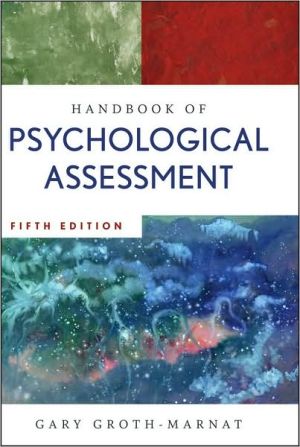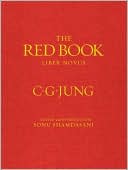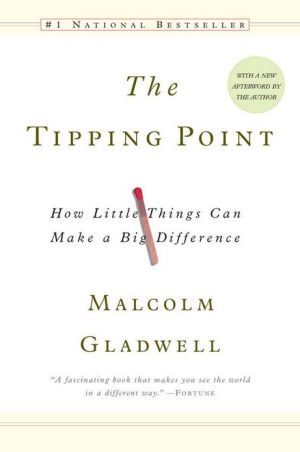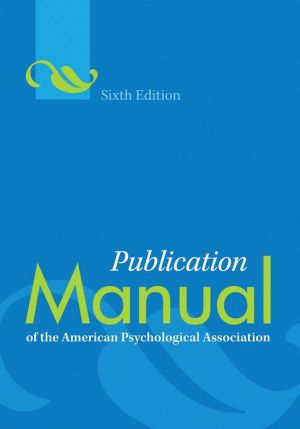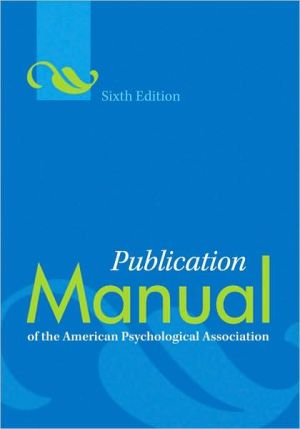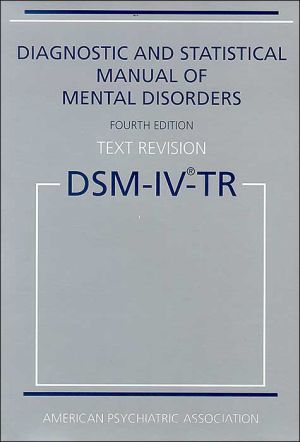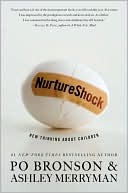Psychological Assessment
The most highly acclaimed and complete reference work on psychological assessment-fully updated and expanded\ Covering principles of assessment, evaluation, referral, treatment planning, and report writing, the latest edition of Gary Groth-Marnat's landmark Handbook of Psychological Assessment has been thoroughly revised and expanded. Written in a practical, skills-based manner, this classic resource offers coverage of the most widely used assessment instruments and has been updated to...
Search in google:
Groth-Marnat's (U. of California-Santa Barbara; Pacifica Graduate Institute, Santa Barbara) text, suitable as both a reference and instructional guide, replicates the sequence practitioners follow when performing a psychological evaluation. The fourth edition includes a brief introductory chapter on the third edition of the Wechsler Memory Scales (WMS-III); a chapter on brief instruments for treatment planning, monitoring, and outcome assessment (Symptom Checklist 90-R, Beck Depression Inventory, State Trait Anxiety Inventory); and updated research on all assessment techniques. Annotation ©2003 Book News, Inc., Portland, OR Contemporary Psychology . . . a commendable volume in which the author condenses information, normally in several locations, into one reading . . . an excellent text for graduate courses on psychological assessment. It would familiarize the student with the entire enterprise of clinical assessment and provide enough of a how-to guide for the student to carry out an assessment practicum.
Handbook of Psychological Assessment\ \ By Gary Groth-Marnat \ John Wiley & Sons\ ISBN: 0-471-41979-6 \ \ \ Chapter One\ INTRODUCTION \ The Handbook of Psychological Assessment is designed to develop a high level of practitioner competence by providing relevant practical, as well as some theoretical, material. It can serve as both a reference and instructional guide. As a reference book, it aids in test selection and the development of a large number and variety of interpretive hypotheses. As an instructional text, it provides students with the basic tools for conducting an integrated psychological assessment. The significant and overriding emphasis in this book is on assessing areas that are of practical use in evaluating individuals in a clinical context. It is applied in its orientation, and for the most part, I have kept theoretical discussions to a minimum. Many books written on psychological testing and the courses organized around these books focus primarily on test theory, with a brief overview of a large number of tests. In contrast, my intent is to focus on the actual processes that practitioners go through during assessment. I begin with such issues as role clarification and evaluation of the referral question and end with treatment planning and the actual preparation of the report itself. Although I have included some material on test theory, my purpose is to review those areas that are most relevant in evaluating tests before including them in a battery.\ One ofthe crucial skills that I hope readers of this text will develop, or at least have enhanced, is a realistic appreciation of the assets and limitations of assessment. This includes an appraisal of psychological assessment as a general strategy as well as an awareness of the assets and limitations of specific instruments and procedures. A primary limitation of assessment lies in the incorrect handling of the data, which is not integrated in the context of other sources of information (behavioral observations, history, other test scores). Also, the results are not presented in a way that helps solve the unique problems clients or referral sources are confronting. To counter these limitations, the text continually provides practitioners with guidelines for integrating and presenting the data in as useful a manner as possible. The text is thus not so much a book on test interpretation (although this is an important component) but on test integration within the wider context of assessment. As a result, psychologists should be able to create reports that are accurate, effective, concise, and highly valued by the persons who receive them.\ ORGANIZATION OF THE HANDBOOK\ My central organizational plan for the Handbook of Psychological Assessment replicates the sequence practitioners follow when performing an evaluation. They are initially concerned with clarifying their roles, ensuring that they understand all the implications of the referral question, deciding which procedures would be most appropriate for the assessment, and reminding themselves of the potential problems associated with clinical judgment (Chapter 1). They also need to understand the context in which they will conduct the assessment. This understanding includes appreciating the issues, concerns, terminology, and likely roles of the persons from these contexts. Practitioners also must have clear ethical guidelines, know how to work with persons from diverse backgrounds, and recognize issues related to computer-assisted assessment and the ways that the preceding factors might influence their selection of procedures (see Chapter 2).\ Once practitioners have fully understood the preliminary issues discussed in Chapters 1 and 2, they must select different strategies of assessment. The three major strategies are interviewing, observing behavior, and psychological testing. An interview is likely to occur during the initial phases of assessment and is also essential in interpreting test scores and understanding behavioral observations (see Chapter 3). The assessment of actual behaviors might also be undertaken (see Chapter 4). Behavioral assessment might be either an end in itself, or an adjunct to testing. It might involve a variety of strategies such as the measurement of overt behaviors, cognitions, alterations in physiology, or relevant measures from self-report inventories.\ The middle part of the book (Chapters 5 through 13) provides a general overview of the most frequently used tests. Each chapter begins with an introduction to the test in the form of a discussion of its history and development, current evaluation, and procedures for administration. The main portions of these chapters provide a guide for interpretation, which includes such areas as the meaning of different scales, significant relations between scales, frequent trends, and the meaning of unusually high or low scores. When appropriate, there are additional subsections. For example, Chapter 5, "Wechsler Intelligence Scales," includes additional sections on the meaning of IQ scores, estimating premorbid IQ, and assessing special populations. Likewise, Chapter 11, "Thematic Apperception Test," includes a summary of Murray's theory of personality because a knowledge of his concepts is a prerequisite for understanding and interpreting the test. Chapter 12, "Screening and Assessing for Neuropsychological Impairment," varies somewhat from the preceding format in that it is more a compendium and interpretive guide to some of the most frequently used short neuropsychological tests, along with a section on the special considerations in conducting a neuropsychological interview. This organization reflects the current emphasis on and strategies for assessing patients with possible neuropsychological dysfunction.\ Several of the chapters on psychological tests are quite long, particularly those for the Wechsler scales, Minnesota Multiphasic Personality Inventory, and neuropsychological screening and assessment. These chapters include extensive summaries of a wide variety of interpretive hypotheses intended for reference purposes when practitioners must generate interpretive hypotheses based on specific test scores. To gain initial familiarity with the tests, I recommend that practitioners or students carefully read the initial sections (history and development, psychometric properties, etc.) and then skim through the interpretation sections more quickly. This provides the reader with a basic familiarity with the procedures and types of data obtainable from the tests. As practical test work progresses, clinicians can then study the interpretive hypotheses in greater depth and gradually develop more extensive knowledge of the scales and their interpretation.\ Based primarily on current frequency of use, the following tests are covered in this text: the Wechsler intelligence scales (WAIS-III /WISC-III), Wechsler Memory Scales (WMS-III), Minnesota Multiphasic Personality Inventory (MMPI-2), Millon Clinical Multiaxial Inventory (MCMI-III ), Bender Visual Motor Gestalt Test (along with other frequently used neuropsychological tests), Rorschach, and the Thematic Apperception Test (TAT; Camara, Nathan, & Puente, 2000; C. Piotrowski & Zalewski, 1993; Watkins, 1991; Watkins, Campbell, Nieberding, & Hallmark, 1995). The California Personality Inventory (CPI) was selected because of the importance of including a broad-based inventory of normal functioning along with its excellent technical development and relatively large research base (Anastasi & Urbina, 1997; Baucom, 1985; Gough, 2000; Wetzler, 1990). I also included a chapter on the most frequently used brief, symptom-focused inventories because of the increasing importance of monitoring treatment progress and outcome in a cost- and time-efficient managed care environment (Eisman, 2000; C. Piotrowski, 1999). The preceding instruments represent the core assessment devices used by most practitioners.\ Finally, the clinician must generate relevant treatment recommendations and integrate the assessment results into a psychological report. Chapter 14 provides a systematic approach for working with assessment results to develop practical, empirically supported treatment recommendations. Chapter 15 presents guidelines for report writing, a report format, and four sample reports representative of the four most common types of referral settings (medical setting, legal context, educational context, psychological clinic). Thus, the chapters follow a logical sequence and provide useful, concise, and practical knowledge.\ ROLE OF THE CLINICIAN\ The central role of clinicians conducting assessments should be to answer specific questions and aid in making relevant decisions. To fulfill this role, clinicians must integrate a wide range of data and bring into focus diverse areas of knowledge. Thus, they are not merely administering and scoring tests. A useful distinction to highlight this point is the contrast between a psychometrist and a clinician conducting psychological assessment (Maloney & Ward, 1976; Matarazzo, 1990). Psychometrists tend to use tests merely to obtain data, and their task is often perceived as emphasizing the clerical and technical aspects of testing. Their approach is primarily data oriented, and the end product is often a series of traits or ability descriptions. These descriptions are typically unrelated to the person's overall context and do not address unique problems the person may be facing. In contrast, psychological assessment attempts to evaluate an individual in a problem situation so that the information derived from the assessment can somehow help with the problem. Tests are only one method of gathering data, and the test scores are not end products, but merely means of generating hypotheses. Psychological assessment, then, places data in a wide perspective, with its focus being problem solving and decision making.\ The distinction between psychometric testing and psychological assessment can be better understood and the ideal role of the clinician more clearly defined by briefly elaborating on the historical and methodological reasons for the development of the psychometric approach. When psychological tests were originally developed, group measurements of intelligence met with early and noteworthy success, especially in military and industrial settings where individual interviewing and case histories were too expensive and time consuming. An advantage of the data-oriented intelligence tests was that they appeared to be objective, which would reduce possible interviewer bias. More important, they were quite successful in producing a relatively high number of true positives when used for classification purposes. Their predictions were generally accurate and usable. However, this created the early expectation that all assessments could be performed using the same method and would provide a similar level of accuracy and usefulness. Later assessment strategies often tried to imitate the methods of earlier intelligence tests for variables such as personality and psychiatric diagnosis.\ A further development consistent with the psychometric approach was the strategy of using a "test battery." It was reasoned that if a single test could produce accurate descriptions of an ability or trait, administering a series of tests could create a total picture of the person. The goal, then, was to develop a global, yet definitive, description for the person using purely objective methods. This goal encouraged the idea that the tool (psychological test) was the best process for achieving the goal, rather than being merely one technique in the overall assessment procedure. Behind this approach were the concepts of individual differences and trait psychology. These assume that one of the best ways to describe the differences among individuals is to measure their strengths and weaknesses with respect to various traits. Thus, the clearest approach to the study of personality involved developing a relevant taxonomy of traits and then creating tests to measure these traits. Again, there was an emphasis on the tools as primary, with a de-emphasis on the input of the clinician. These trends created a bias toward administration and clerical skills. In this context, the psychometrist requires little, if any, clinical expertise other than administering, scoring, and interpreting tests. According to such a view, the most preferred tests would be machine-scored true-false or multiple choice-constructed so that the normed scores, rather than the psychometrist, provide the interpretation.\ The objective psychometric approach is most appropriately applicable to ability tests such as those measuring intelligence or mechanical skills. Its usefulness decreases, however, when users attempt to assess personality traits such as dependence, authoritarianism, or anxiety. Personality variables are far more complex and, therefore, need to be validated in the context of history, behavioral observations, and interpersonal relationships. For example, a T score of 70 on the MMPI-2 scale 9 (mania) takes on an entirely different meaning for a high-functioning physician than for an individual with a poor history of work and interpersonal relationships. When the purely objective psychometric approach is used for the evaluation of problems in living (neurosis, psychosis, etc.), its usefulness is questionable.\ Psychological assessment is most useful in the understanding and evaluation of personality and especially of problems in living. These issues involve a particular problem situation having to do with a specific individual. The central role of the clinician performing psychological assessment is that of an expert in human behavior who must deal with complex processes and understand test scores in the context of a person's life. The clinician must have knowledge concerning problem areas and, on the basis of this knowledge, form a general idea regarding behaviors to observe and areas in which to collect relevant data. This involves an awareness and appreciation of multiple causation, interactional influences, and multiple relationships. As Woody (1980) has stated, "Clinical assessment is individually oriented, but it always considers social existence; the objective is usually to help the person solve problems."\ In addition to an awareness of the role suggested by psychological assessment, clinicians should be familiar with core knowledge related to measurement and clinical practice. This includes descriptive statistics, reliability (and measurement error), validity (and the meaning of test scores), normative interpretation, selection of appropriate tests, administration procedures, variables related to diversity (ethnicity, race, age, gender), testing individuals with disabilities, and an appropriate amount of supervised experience (Turner, DeMers, Fox, & Reed, 2001).\ \ Continues...\ \ \ \ Excerpted from Handbook of Psychological Assessment by Gary Groth-Marnat Excerpted by permission.\ All rights reserved. No part of this excerpt may be reproduced or reprinted without permission in writing from the publisher.\ Excerpts are provided by Dial-A-Book Inc. solely for the personal use of visitors to this web site. \ \
PrefaceCh. 1Introduction1Ch. 2Context of Clinical Assessment37Ch. 3The Assessment Interview69Ch. 4Behavioral Assessment103Ch. 5Wechsler Intelligence Scales129Ch. 6Wechsler Memory Scales197Ch. 7Minnesota Multiphasic Personality Inventory213Ch. 8Millon Clinical Multiaxial Inventory311Ch. 9California Psychological Inventory355Ch. 10Rorschach407Ch. 11Thematic Apperception Test477Ch. 12Screening and Assessing for Neuropsychological Impairment517Ch. 13Brief Instruments for Treatment Planning, Monitoring, and Outcome Assessment579Ch. 14Psychological Assessment and Treatment Planning595Ch. 15Psychological Report621App. A673App. B677App. C678App. D679App. E680App. F682App. G690App. H691App. I696App. J699App. K700App. L702References703Author Index799Subject Index811
\ From the PublisherPraise for the Fourth Edition\ "In sum, this book continues to set the standard in the field and is strongly recommended as a basic reference guide for those clinicians who routinely do psychological testing." (Psychotherapy Review, 11/6/2006)\ \ \ \ \ \ Bertram H. Rothschild[The book's] purpose has been splendidly realized by Groth-Marnat, who has combined current scientific and clinical understandings and clear writing with an excellent sense of organization.\ \ \ Contemporary Psychology. . . a commendable volume in which the author condenses information, normally in several locations, into one reading . . . an excellent text for graduate courses on psychological assessment. It would familiarize the student with the entire enterprise of clinical assessment and provide enough of a how-to guide for the student to carry out an assessment practicum.\ \ \ \ \ Reference and Research Book NewsFor both practitioners and students of psychological assessment, the expanded and updated Handbook provides guidance to the selection, administration, evaluation, and interpretation of the most commonly used psychological tests.\ \ \ \ \ BooknewsFor both practitioners and students of psychological assessment, the expanded and updated Handbook provides guidance to the selection, administration, evaluation, and interpretation of the most commonly used psychological tests. It also instructs readers in integrating test results, interview data, and behavioral measurements into a psychological report. Annotation c. Book News, Inc., Portland, OR (booknews.com)\ \ \ \ \ BooknewsA step-by-step guide to the classic tests for psychological assessment, including Wechsler Intelligence Scales, Bender-Gestalt, Rorschach, the Minnesota Multiphasic, and projective drawings. Compiles information from many separate manuals and texts. The third edition updates evaluation systems, includes new and revised tests, adds sections on ethics and test selection, and expands the coverage of various topics. No dates are noted for the previous editions. Annotation c. by Book News, Inc., Portland, Or.\ \
